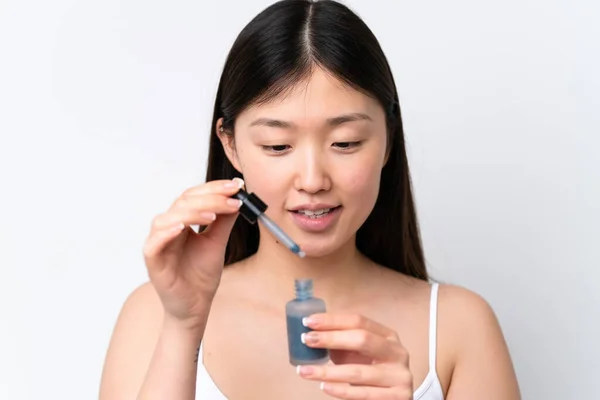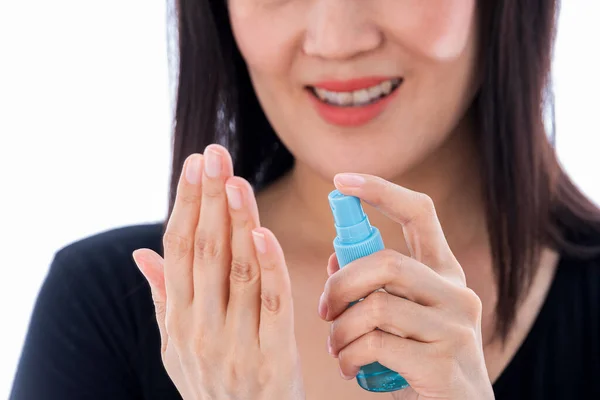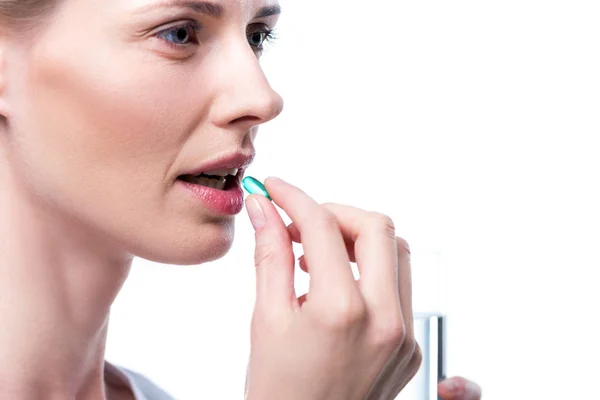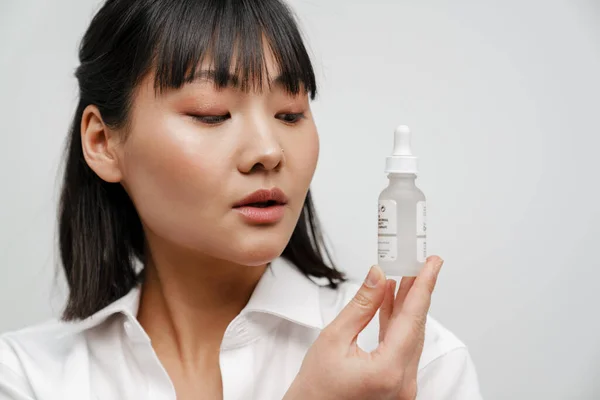When to apply hyaluronic acid: Use it on damp skin right after cleansing, followed by a moisturizer to lock in hydration. Incorporating hyaluronic acid into your skincare routine can be a game changer for achieving plump, hydrated skin, but knowing when to apply it is crucial for maximizing its benefits.
Hyaluronic acid, a moisture magnet, works best when applied at the right step, ensuring your skin gets the hydration boost it craves. Whether you’re battling dryness or simply looking to maintain a youthful glow, understanding the ideal timing in your routine can make all the difference.
So, when exactly should this powerhouse ingredient come into play for optimal results? Let’s break it down!

When To Apply Hyaluronic Acid
Hyaluronic acid should be applied after cleansing and toning but before moisturizing in your skincare routine. It’s best to use it on slightly damp skin to maximize hydration.
Ideally, hyaluronic acid serums should be applied twice daily in the morning and night. This helps lock in moisture and keeps your skin looking plump and hydrated throughout the day. Follow up with a moisturizer and sunscreen for optimal results.
Best Time to Apply Hyaluronic Acid
Hyaluronic acid works best when applied after cleansing and toning. This is because your skin is clean and can fully absorb the product. Many skincare enthusiasts recommend applying it on slightly damp skin as hyaluronic acid is a humectant, which means it draws moisture from the environment into your skin.
Applying it at this stage in your routine helps the serum penetrate more effectively. Layering it under your moisturizer creates a hydration barrier, trapping moisture to keep your skin plump.
Morning and Evening Application
In the morning, applying hyaluronic acid helps retain moisture throughout the day. After you wash your face, you’ll want to apply it before your day cream or moisturizer for optimal hydration.
Don’t forget to layer with sunscreen after moisturizing, as this will protect your skin from harmful UV rays. At night, hyaluronic acid aids in skin repair, giving it a supple and refreshed look when you wake up. If you’re using any active ingredients like retinol or vitamin C apply hyaluronic acid after those steps.
Complementing Other Skincare Ingredients
Hyaluronic acid is incredibly versatile and works well with most other skincare products. You can layer it with vitamin C serums, retinoids, or even exfoliating acids.
This makes it a staple in multi-step routines aimed at both anti aging and hydration. The important thing is to always seal it in with a moisturizer, as this ensures you don’t lose the moisture it draws into your skin.

General Guidelines for Applying Hyaluronic Acid
HA’s Role in the Skincare Layering Process
Hyaluronic acid (HA) is essential in hydrating and plumping skin. It should always be applied after cleansing and toning to lock in moisture but before heavier creams or oils, which can create a barrier.
This order ensures HA penetrates deeply, maximizing hydration. Applying HA to slightly damp skin enhances its ability to draw moisture into the skin, providing long-lasting hydration and reducing dryness.
Ideal Times to Use HA
Morning Routine
HA helps prevent moisture loss throughout the day. It leaves the skin looking plump and smooth, creating a perfect base for makeup. By hydrating the skin, HA also complements sunscreen, enhancing its protective layer.
Evening Routine
At night, HA aids in skin repair and replenishment. It pairs well with retinol or peptides, amplifying their anti-aging effects. Together, they work overnight to hydrate, restore, and rejuvenate the skin.

Step-by-Step Skincare Routine with Hyaluronic Acid
Morning Routine
Cleanser
Start your day with a gentle cleanser to remove dirt and oil. A clean base helps other products absorb better.
Toner (Optional)
Apply a hydrating toner to prep your skin. This boosts moisture and preps the skin for the next steps.
Hyaluronic Acid
While your skin is still damp, apply a hyaluronic acid serum. This allows HA to lock in moisture, maximizing hydration.
Vitamin C (Optional)
For bright, glowing skin, add a vitamin C serum. It complements HA by enhancing hydration and fighting free radicals.
Moisturizer
Seal in all that hydration with a lightweight, non-comedogenic moisturizer. This keeps your skin soft and supple throughout the day.
Sunscreen
Always finish your morning routine with SPF 30 or higher. Protecting your skin from UV damage is crucial for long-term skin health.
Evening Routine
Cleanser
Use a gentle or double cleanse to remove makeup, sunscreen, and impurities. Cleansing at night ensures a clean canvas for overnight treatments.
Toner (Optional)
Refresh and hydrate your skin with a soothing toner, which can help balance your skin after cleansing.
Treatment Serums (Optional)
Apply treatment serums like retinol or AHAs to target specific skin concerns. These work best before your HA serum.
Hyaluronic Acid
Apply your hyaluronic acid serum to lock in moisture and support skin repair overnight.
Moisturizer or Overnight Mask
Finish with a rich, hydrating moisturizer or overnight mask to keep your skin nourished and hydrated while you sleep.
Best Practices for Using Hyaluronic Acid
Applying on Damp Skin
When applying hyaluronic acid (HA), always start with damp skin. The science behind this is simple: HA is a humectant, meaning it draws water. If the air around you is dry, HA might pull moisture from deeper layers of your skin. However, in humid conditions, HA can pull water directly from the air.
Applying it on damp skin ensures it binds to the water already on your face, maximizing hydration. People often search for ways to boost HA’s effectiveness, and applying on damp skin is a common tip.
How Much HA to Use
The amount of hyaluronic acid you use matters. A pea-sized amount is enough for your entire face. Too much product won’t increase effectiveness. HA is safe to use twice daily morning and evening. Many people wonder how often they can apply HA, and the simple answer is every day. It fits seamlessly into most skincare routines.
Layering HA with Other Skincare Ingredients
Hyaluronic acid pairs well with ingredients like Vitamin C, peptides, and niacinamide. These combinations enhance your skincare results. However, be cautious when layering HA with stronger exfoliants or retinoids.
Using too many potent ingredients at once can cause irritation. People often ask about mixing HA with actives like acids it’s best to alternate or separate these in your routine to avoid conflicts.
Environmental Factors
Hyaluronic acid’s effectiveness depends on the environment. In dry climates, HA can cause dehydration if not paired with an occlusive layer to lock in moisture.
This is why people in arid areas should follow HA with a moisturizer. In contrast, humid climates enhance HA’s ability to pull moisture from the air, providing a plumper look. Knowing how HA behaves in different environments can help you tailor your skincare routine.
HA and Different Skin Types
All skin types benefit from hyaluronic acid. For dry skin, HA provides much needed hydration. Oily and combination skin types love its lightweight texture, which doesn’t clog pores.
Even sensitive skin tolerates HA well, making it a common choice for calming irritation. Customizing your routine based on your skin type can amplify HA’s benefits, leading to better results.

FAQs
When should I apply hyaluronic acid ?
Hyaluronic acid should be applied after cleansing and toning, but before moisturizing. It’s best to apply it to slightly damp skin to maximize hydration. Follow up with a moisturizer to lock in the moisture it attracts.
Is it better to use hyaluronic acid in the morning or at night?
You can use hyaluronic acid both in the morning and at night. In the morning, it helps hydrate and plump the skin, while at night, it works to replenish moisture lost throughout the day. However, if your skin routine is complex, nighttime might be more beneficial for optimal absorption.
Can I use hyaluronic acid with other active ingredients?
Yes, hyaluronic acid pairs well with most skincare ingredients, including retinol, vitamin C, and niacinamide. It’s a gentle hydrating agent that enhances the effectiveness of these active ingredients without causing irritation.
Do I apply hyaluronic acid before or after my serum?
Hyaluronic acid should generally be applied before your serum if the serum is oil-based or has a thicker consistency. However, if the serum is water-based, you can apply hyaluronic acid either before or after, depending on your skin’s preference.
Should I apply hyaluronic acid to dry or damp skin?
It’s recommended to apply hyaluronic acid to slightly damp skin. Hyaluronic acid draws moisture from its surroundings, so applying it to damp skin enhances its ability to attract and retain moisture, leaving your skin hydrated and plump.
Can I use hyaluronic acid every day?
Yes, hyaluronic acid is safe for daily use and can be incorporated into both your morning and nighttime skincare routines. Its hydrating properties make it suitable for all skin types, even sensitive skin.
Is there a specific moisturizer to use after applying hyaluronic acid?
After applying hyaluronic acid, follow up with a moisturizer that suits your skin type. Look for one that has occlusive ingredients like squalane or ceramides, as they help seal in the hydration hyaluronic acid provides.
Can I layer hyaluronic acid with retinol or exfoliating acids?
Yes, hyaluronic acid can be used alongside retinol and exfoliating acids. Since these ingredients can sometimes cause dryness, hyaluronic acid helps mitigate that by maintaining hydration and reducing irritation.
How much hyaluronic acid should I use?
A small amount, about the size of a pea, is enough to cover your face. Apply a thin layer to ensure even absorption and follow up with your other skincare products.
What type of hyaluronic acid product is best for my skin?
Choose a hyaluronic acid serum if you want a lightweight, hydrating layer. If your skin is particularly dry or sensitive, you might prefer a cream or gel formulation, which offers more intense moisture retention.
Conclusion
In conclusion, incorporating hyaluronic acid into your skincare routine can significantly boost hydration and improve skin texture. The best time to apply hyaluronic acid is after cleansing and toning, while the skin is still slightly damp, to maximize its ability to lock in moisture.
For optimal results, it can be used both in the morning and evening before applying your moisturizer or sunscreen. Whether you have dry, oily, or sensitive skin, hyaluronic acid is a versatile, lightweight ingredient that enhances skin’s hydration without clogging pores, making it an essential step for achieving a plump, radiant complexion.

